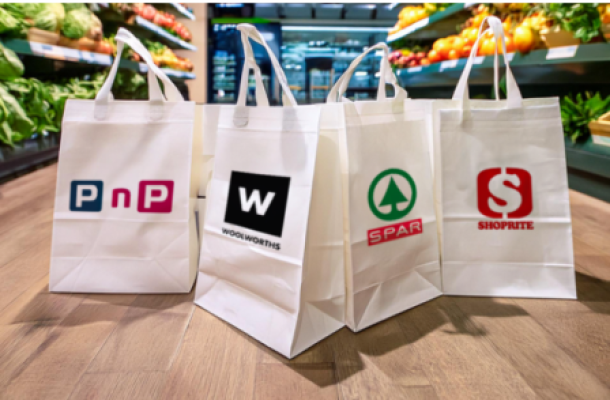This map shows how grocery shopping has changed in South Africa during lockdown
Data analytics company Lightstone has published a new report outlining South African grocery shopping patterns during the coronavirus lockdown.
The group noted that under normal (non-lockdown) circumstances, consumers choose shopping destinations based partly on their normal daily movements and convenience of proximity to work, schools or home.
During lockdown, however, shopping behaviour has changed – with most South Africans staying at home it is fair to assume that they will not only choose to shop for essential items closest to their home but opt for a store that they can spend less time at, avoiding larger shopping centres, the group said.
Using aggregated and anonymised vehicle movement data from Tracker, Lightstone’s found that on average, shopping centres that have a grocery store had 66% fewer trips during the first week of lockdown when compared to a typical week before the lockdown.
“Prior to lockdown, major shopping centres were averaging 16.6 million trips in a six-day period, however, the first six days of lockdown saw this number drop dramatically to only 5.7 million trips, with provincial differences ranging from -59% (Eastern Cape) to -68% (Western Cape),” said Linda Reid, head of Data at Lightstone.
“Further analysis of the data showed that not all shopping centres with grocery store presence dropped by the same amount, and there is a definite shift of activity towards convenience shopping centres that are closer to residential areas than those located in business districts,” she said.
The map below explains this in more detail. Lightstone’s analysis looked at what portion each shopping centre received of the province’s visits before the lockdown, versus the share of the province’s (reduced) visits after lockdown.
- Shopping centres where that share remained the same, have maintained their market share (of a diminished “pie”) and are white on the map;
- Shopping centres where that share dropped by between 5% – 25% are light blue and the dark blue and grey markers indicate shopping centres where severe loss in share of visits have occurred;
- Shopping centres where that share increased by 5% – 50% are green to yellow, with red ones indicating dramatic increase in share.
“It is important to remember that although these shopping centres may be enjoying a bigger share, the share of the ‘pie’ is still vastly diminished resulting in total business still being significantly impacted,” said Reid.
The map further indicates that business-focused hubs like Sandton, wealthier residential suburbs along William Nicol from Rosebank, through Bryanston, into Fourways have seen a decreased share in visits.
Lightstone evaluated whether this is as a result of pre-lockdown stockpiling (which wealthier people were more likely to do in comparison to those with lower incomes) and found that these shopping centres also had a lower number the week prior to lockdown – which means that stockpiling can be overruled here.
Suburban areas outside of the ring road that circles Johannesburg CBD are also gaining shares where these shoppers would, pre-lockdown, have frequented the centres closer to where people work in the city, said Reid.
Townships
“Townships seem to be a mixed bag. Shopping centres in Soweto and Mamelodi have mostly increased their share, but Diepsloot and Tembisa shopping centres seem to have a lower share than before the lockdown” Reid said.
Lightstone found that during the first two days of lockdown, those township stores showed a strong market share gain as many received their salaries.
“Perhaps shopping patterns differ compared to other areas, and people spent their money in the first two days because they could not stockpile.” Reid said.
“Another scenario could be that consumers are shifting their buying patterns to purchase from local spaza shops for smaller needs in between weekly or biweekly trips for larger amounts.”
News Category
- International retailers
- On the move
- Awards and achievements
- Legislation
- Wine and liquor
- Africa
- Going green
- Supplier news
- Research tools
- Retailer trading results
- Supply chain
- Innovation and technology
- Economic factors
- Crime and security
- Store Openings
- Marketing and Promotions
- Social Responsibility
- Brand Press Office
Related Articles

Checkers Sixty60 wipes floor with Pick n Pay As...

Top tips for consumers to combat escalating ele...

Clear winner in South African retail battle

Drinks survey reveals Rooibos as a top choice a...




